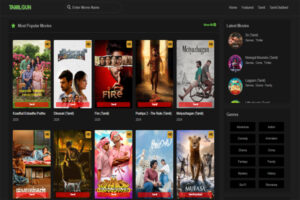
In today’s attention economy, short-form video content reigns supreme. Instagram Reels, YouTube Shorts, and Facebook/Instagram Stories (plus Snapchat and TikTok equivalents) dominate user engagement, influence purchasing behavior, and shape how brands communicate online. But with so many options, marketers often ask: Which format delivers the best return on investment (ROI)?
The answer depends on your goals, audience, content style, and platform strategy. This blog explores the key differences, advantages, and ROI potential of each format—helping you choose the right tool for your brand in 2025 and beyond.
What Are Reels, Shorts, and Stories?
Instagram Reels
- Length: Up to 90 seconds
- Visibility: Public (default) and algorithm-driven
- Placement: Instagram Feed, Reels tab, Explore
- Engagement: Likes, comments, shares, saves
- Discoverability: High via Explore and hashtag search
Reels are Instagram’s answer to TikTok. They’re designed for viral reach and discovery, making them ideal for attracting new followers.
YouTube Shorts
- Length: Up to 60 seconds
- Visibility: Public, appears in Shorts feed
- Placement: YouTube app, Shorts tab
- Engagement: Likes, comments, shares, subscribers
- Discoverability: Moderate to high via algorithm and YouTube search
YouTube Shorts lets creators tap into YouTube’s massive audience with bite-sized, mobile-first content. Shorts are also monetizable (through the YouTube Partner Program), which adds to their ROI appeal.
Stories (Instagram, Facebook, Snapchat)
- Length: 15-second segments (max 60 seconds consecutively)
- Visibility: Ephemeral (24 hours), followers only (unless highlighted)
- Placement: Top of the app feed
- Engagement: DMs, polls, stickers, reactions
- Discoverability: Limited—mostly viewed by existing followers
Stories are less about reach and more about relationship-building. They offer behind-the-scenes access, real-time updates, and interactive tools like polls, quizzes, and swipe-ups.
Engagement & Reach Comparison

| Format | Reach Potential | Engagement Style | Viral Capability | Monetization |
|---|---|---|---|---|
| Reels | High | Public, interactive | Very high | Moderate (via Meta Ads or branded deals) |
| Shorts | High | Likes/comments | High | High (Ad revenue sharing) |
| Stories | Low–Medium | DMs, stickers, polls | Low | Low (primarily via product links/affiliate) |
ROI: What Does It Really Mean?
When we talk about return on investment in social media, we’re looking at what you get (reach, leads, sales, engagement, brand awareness) vs what you put in (time, ad spend, production effort). In short-form video, ROI is impacted by:
- Content creation cost (time, tools, talent)
- Organic or paid distribution
- Conversion performance (click-throughs, purchases, followers)
- Longevity and reusability
Let’s evaluate each format with ROI in mind.
Reels: Viral Reach with Creative Effort
✅ Strengths
- Reels consistently drive high reach, especially when using trending sounds or engaging hooks.
- Instagram’s algorithm heavily promotes Reels over static posts or Stories.
- Ideal for educational, entertaining, or aesthetic content.
- Brands often see a spike in follower growth and impressions through Reels.
❌ Challenges
- High competition. To stand out, you need creative storytelling or unique editing.
- Limited direct monetization unless supported by ads or influencer partnerships.
- Takes longer to produce polished Reels compared to Stories.
🎯 Best ROI Use Cases
- Influencer marketing
- Branded challenges or UGC (user-generated content)
- Product tutorials or demos
💡 Pro tip: Brands who post 3–5 Reels per week see higher engagement rates than those relying on feed content alone.
Shorts: Monetizable Micro-Content
✅ Strengths
- YouTube’s Shorts fund and ad-revenue sharing offer direct monetization, a big ROI advantage.
- Taps into YouTube’s existing SEO and subscriber base.
- Ideal for educational, how-to, or entertainment niches.
- Easy cross-promotion with long-form YouTube videos.
❌ Challenges
- Less native interaction tools (no polls, stickers, etc.).
- More anonymous—less DMs or relationship-building.
- Doesn’t always translate to high engagement beyond views.
🎯 Best ROI Use Cases
- Brands with YouTube presence or long-form content
- Affiliate marketers or educators
- Creators monetizing views directly
💡 Pro tip: Repurpose TikToks or Reels as Shorts with light editing to increase content mileage.
Stories: Relationship Builder, Not Reach Generator
✅ Strengths
- Personal, authentic, and great for humanizing a brand.
- Excellent for limited-time offers, behind-the-scenes, polls, or Q&A.
- Higher conversion rates on “Swipe Up” or link clicks than other formats.
- Great for nurturing your existing audience.
❌ Challenges
- Short shelf-life (24 hours unless highlighted).
- Limited reach outside followers.
- Not ideal for virality or attracting new audiences.
🎯 Best ROI Use Cases
- Small businesses or personal brands nurturing loyal followers
- Influencers promoting products via affiliate links
- Customer engagement and community-building
💡 Pro tip: Use Stories strategically to convert warm leads—those already aware of your product or brand.
The ROI Verdict: Which One Wins?
The answer: It depends on your goal.
1. For Brand Awareness & Follower Growth → Reels or Shorts
Both formats offer strong discoverability and viral potential, but:
- Reels = More stylized, aesthetic-driven, trend-oriented.
- Shorts = Info-packed, niche-driven, tied to long-form strategy.
ROI = High in reach and visibility, especially when paired with consistent posting and trend relevance.
2. For Direct Monetization → YouTube Shorts
Shorts offer a clearer path to revenue through:
- Ad share
- Channel monetization
- Cross-promoting affiliate or product links in the channel description
ROI = Strong if monetization is a priority and you’re targeting searchable, evergreen niches.
3. For Conversions & Engagement with Warm Audiences → Stories
Stories work best when the audience already knows you. They’re the most intimate and conversion-driven format, especially for:
- Product launches
- Discount codes
- Email list growth
- Testimonials and UGC
ROI = High for conversions, low for top-of-funnel reach.
Maximizing ROI Across All Formats
Why choose one when you can repurpose across all three? Here’s how to stretch your content and boost ROI:
🔁 Repurpose Strategy:
- Reels → Shorts: Slight editing or cropping, and reuse with platform-specific CTAs.
- Shorts → Stories: Break into clips and add stickers or swipe-up links.
- Stories → Reels: Turn Story highlights into Reels (e.g., “FAQ Friday” becomes a weekly Reel series).
🛠️ Tips for Better ROI:
- Use platform-native features (stickers on Stories, trending sounds on Reels, captions on Shorts).
- Include clear CTAs: “Follow,” “Click link,” “Comment your thoughts.”
- Use insights/analytics to track performance and refine your strategy.
- Experiment with ad formats (Instagram Boosted Reels, YouTube Shorts Ads, Story Ads) to scale what’s working.
Real-World ROI Examples
- E-commerce Brand: A DTC skincare brand used Reels to build awareness, Shorts for how-to demos, and Stories for exclusive promo codes—leading to a 2.8x increase in sales YoY.
- Fitness Coach: Built an email list through Stories (polls + swipe ups), used Shorts to drive YouTube traffic, and grew 100k followers using Reels challenges.
- SaaS Company: Recycled educational Shorts from webinars and product demos—generating 30% of new YouTube leads at a fraction of PPC cost.
Final Thoughts
There’s no one-size-fits-all when it comes to short-form video formats. But if you understand what each platform does best, align it with your marketing funnel, and measure performance over time, you can unlock serious ROI.
Follow – https://digitalmaurya.com for More Updates



